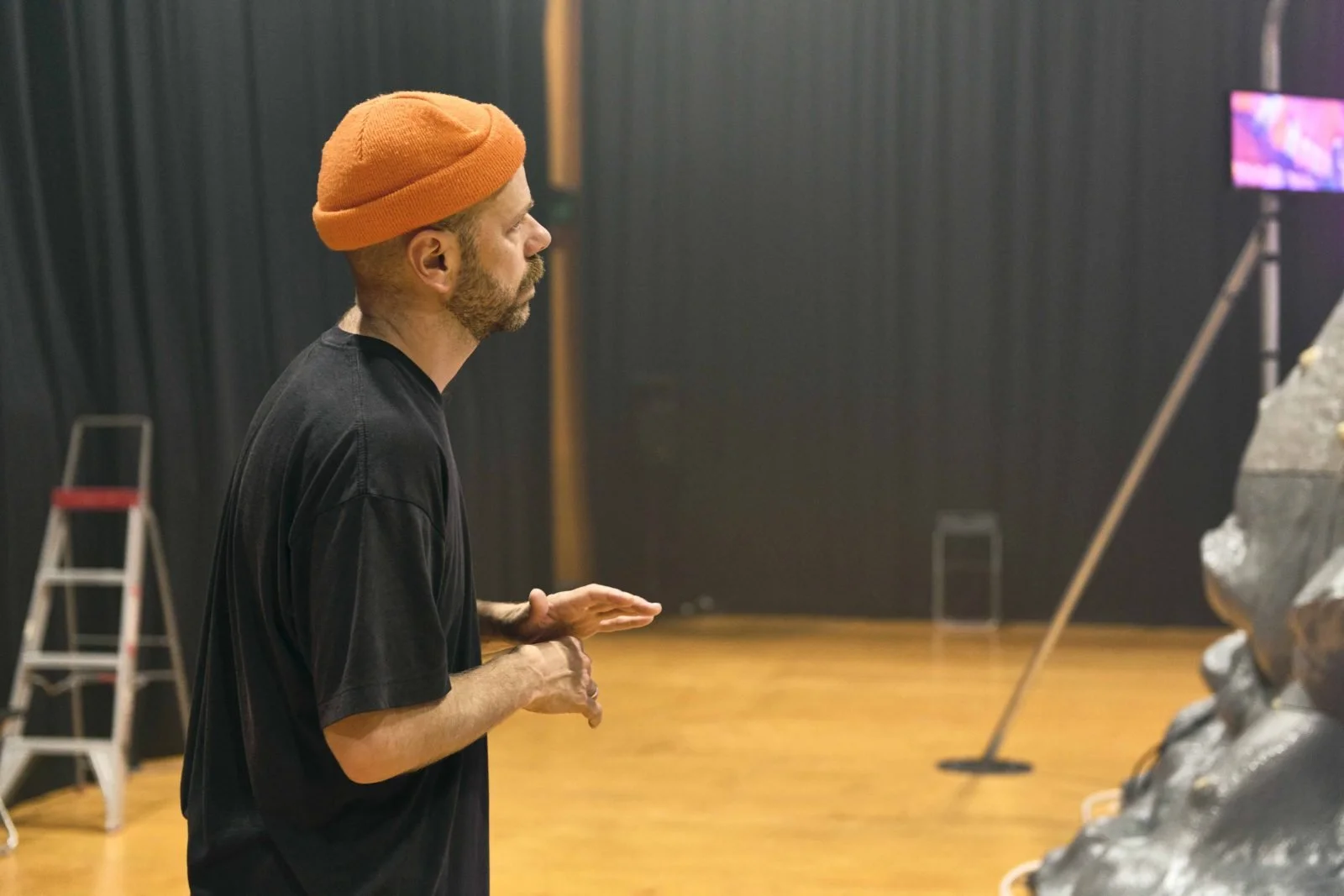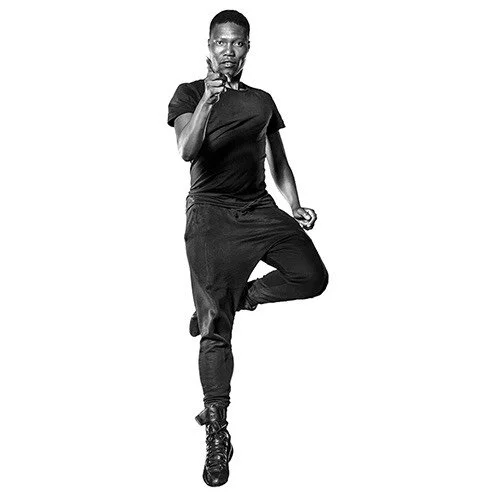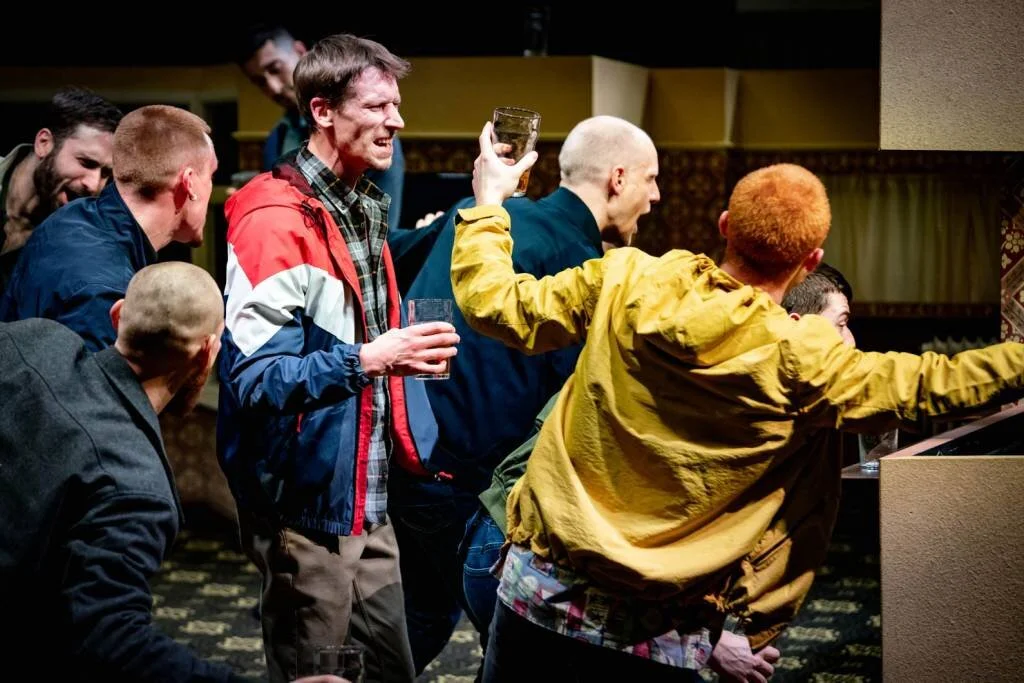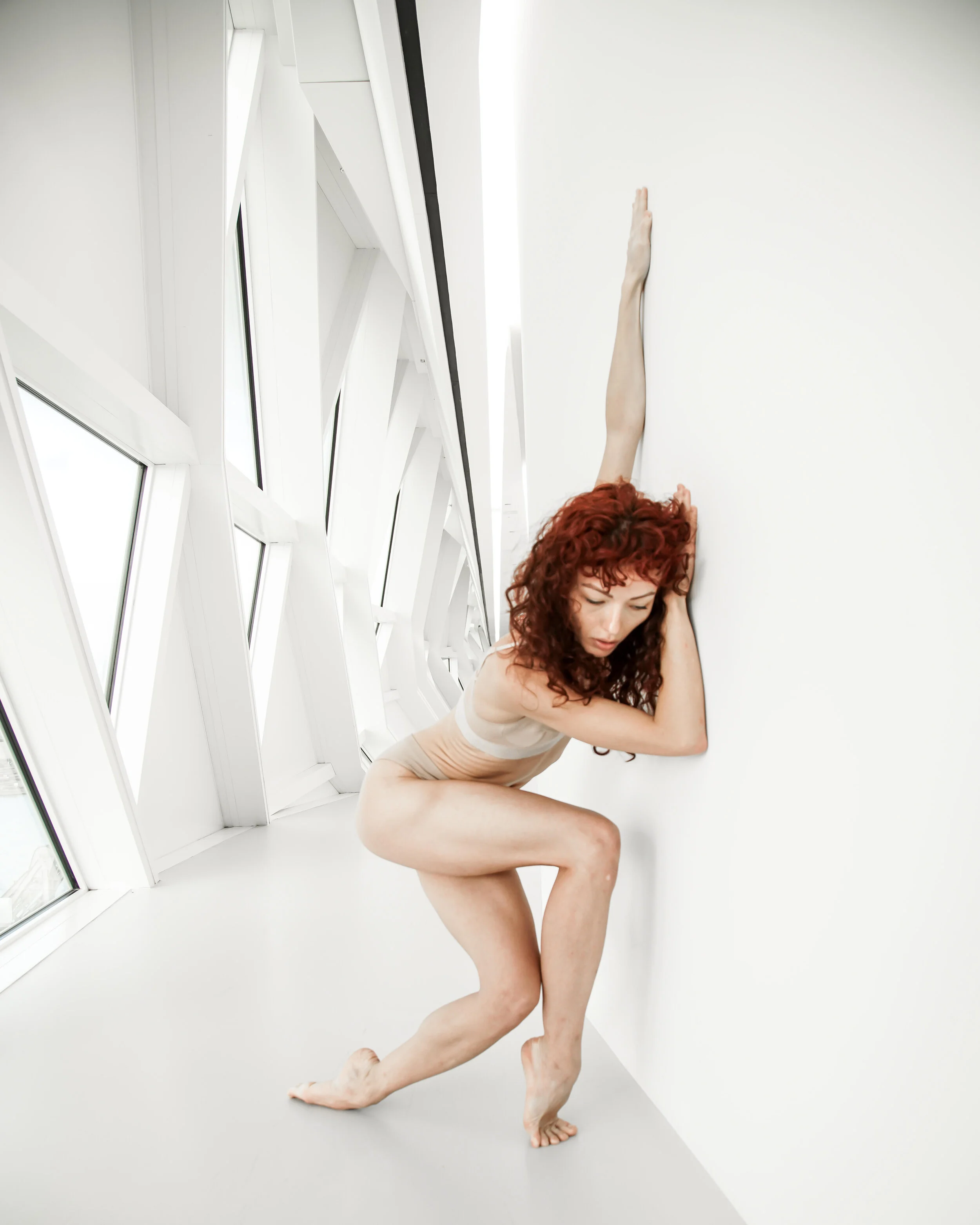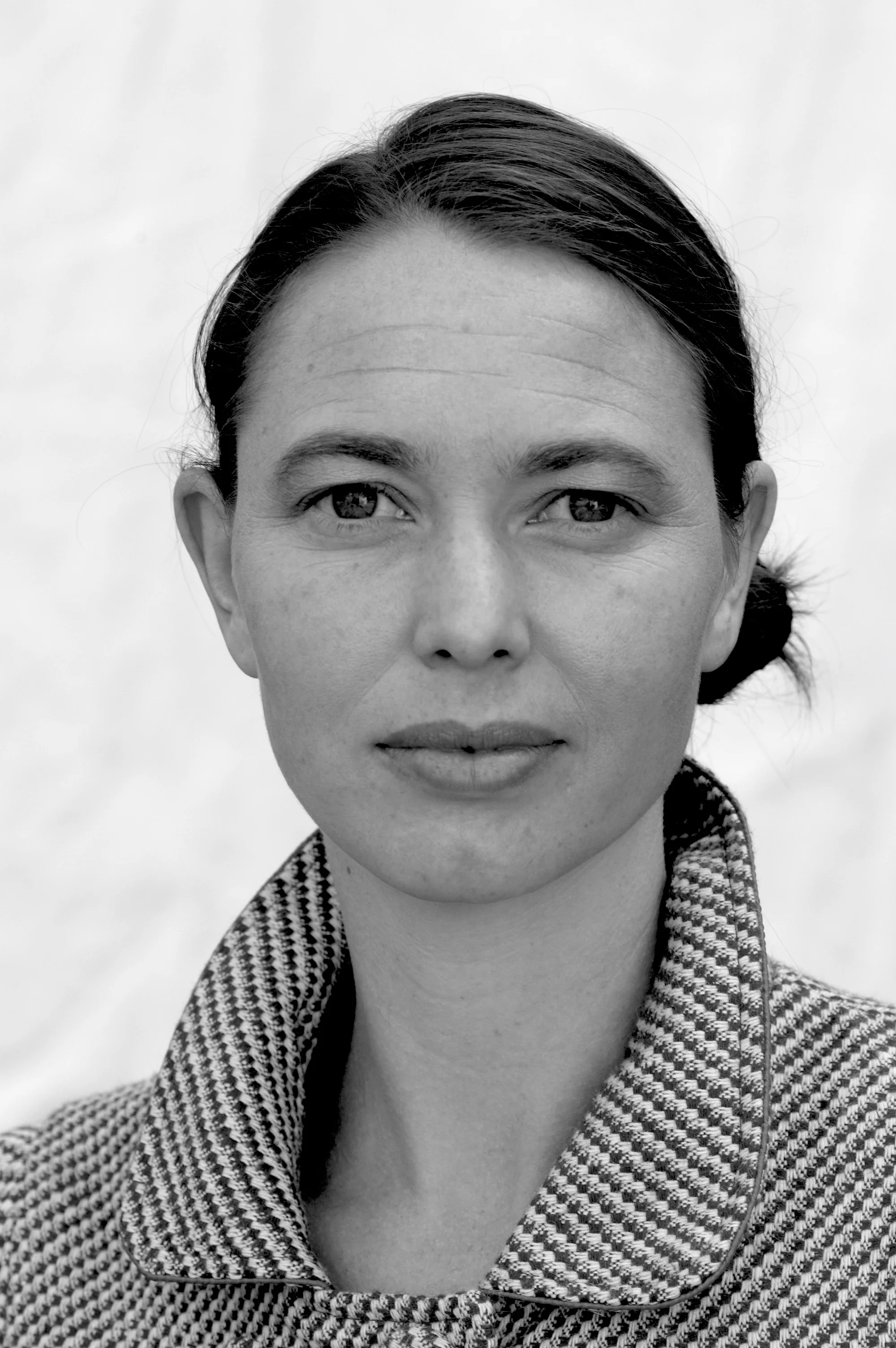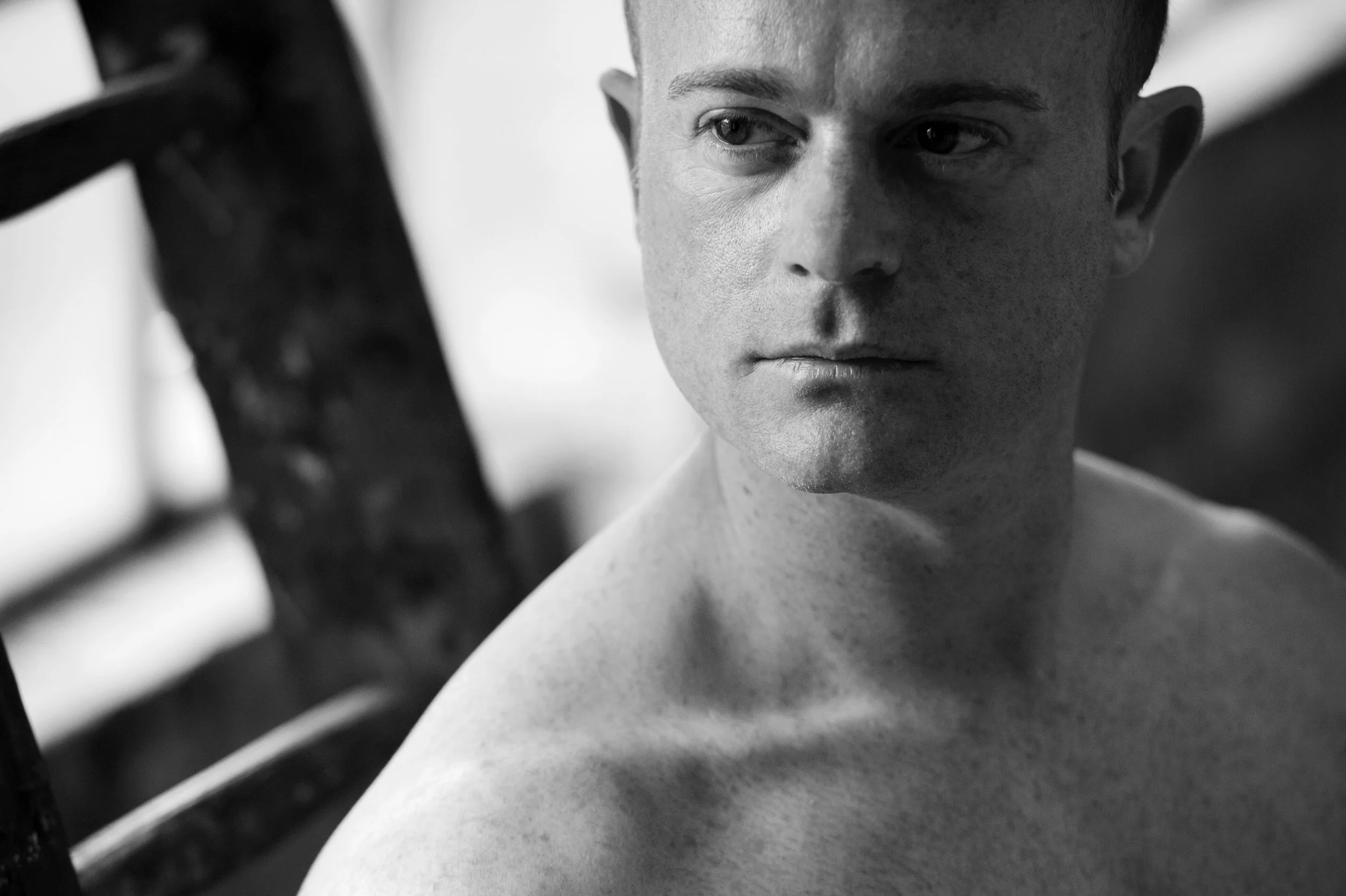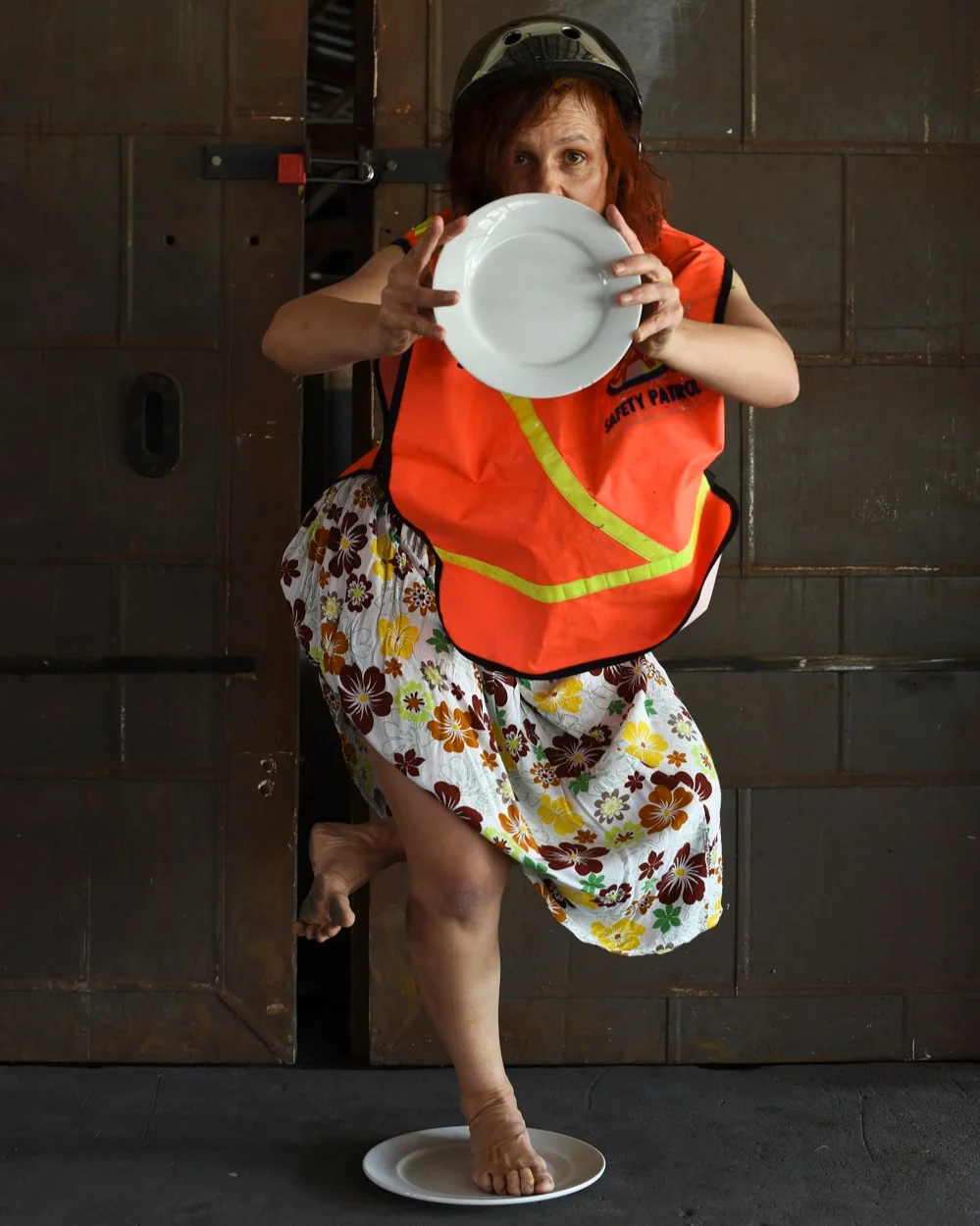This transcript is from an interview that was first published on 17th of October 2022, part of a collaboration with The Australian Ballet and their DanceX Season. This transcript has been edited slightly to help with clarity, the audio of this episode and more information can be found here. The interview starts by asking Alice about where did dance start for her.
Alice: Well, I started dancing when I was four because my Mum had she done some dancing when she was younger. She auditioned for the Australian Ballet School but didn't get in. And I guess at that point in time, there weren't many full time ballet schools, so she kind of went into musicals and musical theatre for a little bit. And when I was four, she had a little school where she taught friends from Primary School and local kids in the neighbourhood and it was called movement to music classes. And she had ribbons and costumes and parasols and props and it was more just less about ballet class and more about just having fun and expressing yourself to music. And that really was when I got the bug, I guess, when I was four. And I stopped for a couple of years and did the horse riding and gym and returned to dance when I was eight. Yeah. And I haven't stopped since. So, 30 years.
Andrew: Yeah. Nice. What is it that you feel like when you're dancing? What is that sensation?
Alice: Yeah. Look, I think initially when I was young, it was really about finding a place to put my emotions and energy and as a kid, trying to make sense of the world when you're growing up. And for me, dance and music, I guess, really was a place where I felt I could express myself when I didn't have the vocabulary or the words or the understanding. And ever since then, it's really been kind of how I make sense of the world. It's very much art therapy for me choreographing and dancing to music is where I can find myself and find my voice when I'm feeling lost or I guess regardless of what's happening in life, I know I can always return to dance. And there's a sense of home and a safe space where I can pour all my emotions into and feel like I can get it out. It's that kind of feeling of people who love sport or swimming, the adrenaline and it's the adrenaline mix along with art. And I can't quite describe it very well, but that's why I’m a dancer, other than author or painter, for me, it's where it sits in the body and I can really find that place where I can channel that feeling. I really, truly believe dance is universal. For many years, it's always been something you do at weddings, at disco, at balls, in every language, every country. Dance, it can be a form of celebration. It's in many ceremonies. And I really think that everybody should be able to find a connection with movement to music. Music itself, people who love bands, it's going to a gig and being in a crowd or an audience with other people sharing that energy and that collective spirit and moving your body, feeling the bass in your body. And I think music is absolutely where it starts. I think, for everyone has a connection to music, whatever genre you love. But with ballet, I think it's very stylised. It's a discipline that some people might not be able to connect with as easily as other forms of dance. I think it's very structured. Usually people associate ballet with tiaras and tutus and tulle and fairies and whatnot. Which I think that can also aid a bit of disconnect because it's otherworldly and it's not necessarily the climate we're living in with all this current chaos and there's political instability. And then next minute you feel like going to the ballet and watching Sleeping Beauty or Cinderella the Nutcracker can feel not as relatable. I think there's a lot of people that love going to it for that reason, because it is otherworldly that it does take you out of the darkness of the everyday and the grind, I guess, and you can have that element of escapism and we can sort of transport you to another world. But I guess for a lot of people, ballet is still very much an evolving, developing language. I think people think it was probably stuck in a time and hasn't progressed. But modern ballet is very challenging and arresting and it's finding new ways of working with an old structure. And I think people probably have an idea of what they think it is and probably aren't as open to understanding that like any art form, like painting, like writing, we are a living, breathing language, and that vocabulary is constantly developing. So I think a lot of people, everyone in the world should be able to connect with that love for where music sits in the body and the desire to move as you hear music, as a celebration or for whatever reason the music is being played. But I think ballet itself, there's probably a little disconnect, I think, with the younger generation, where there's a lot of contemporary dance and modern dance. And where does that leave ballet in the mix of stories that are current and relatable?
Andrew: Yeah, and there is that sense, I guess, for some people it's around escaping, and for others it's like some sort of other stimulus or some way of thinking about the world differently. So maybe there’s a bit of a disconnect there as to why people would buy a ticket.
Alice: Yeah, well, it's interesting, I think, particularly after the time we've had away from being in a theatre due to Covid, there's definitely something about experiencing art unfolding on stage and being in a space where an orchestra is playing and it's flooding the auditorium and you're sitting next to strangers that you do not know who are there, cherishing what is unfolding in front of their eyes. And that collective energy shared in a space is something so precious. We all watched recordings and digital seasons during Covid, but really there's nothing like being in a theatre and seeing the curtain go up, having the orchestra tune. And I think the ballet, getting everyone back into that space is definitely something for everyone to witness at some point in their lives.
Andrew: Yeah, there's something really special about it. You danced for Australian ballet for a really long time and then kind of moved into choreography, and I'm just wondering if you could talk a little bit about where the interest in choreography or when that kind of transition from ballet started to occur.
Alice: Yeah, look, it was really interesting. I had never really thought about pursuing choreography as a career. I sort of chanced upon the opportunity, really, with the Bodytorque season due to Artistic Director of the time, David McAllister and Nicolette Fraillon, who were one choreographer down because the other female who was creating that season pulled out. So they hadn't had a female choreographer for a while and Nicolette thought that I might be someone that would sort of take a chance on and put my hand up and sort of have a crack, really. And it was sort of something that I thought, well, I've spent time outside of the dance industry trying to break into the dance industry. I was at one point injured and struggling to get work again and was working in hospitality. And I knew so many independent dancers trying to get a platform to create and to have space and studios and dancers to work with, and were applying for funding and just how difficult that was. And here I was, I'd been given this opportunity to choreograph for a mainstage season at Sydney Theatre and have the most incredible palette of artists to work with and the support of the company nurturing my voice. And for me, what was really incredible was just the opportunity came up and I said yes and I never really thought it would be not only as fulfilling and inspiring as it was, but that I'd find myself in this position now where that opportunity of just having a go and taking a risk and taking a chance would lead to where I am now. It was an incredible experience I created on two very dear friends and collaborated with some wonderful musicians and designers. And that was really the moment that sort of clicked for me. Everything kind of fell into shape for me. It was definitely having the opportunity to sort of discover my voice with other creatives and collaborate with them. Up until then, I didn't really know what I sounded like. You get delivered a lot of information and directed, Swan Lake and Don Quixote and all the beautiful ballets are already notated and done, and you get fed that information and then you find yourself within the context of that story. And having been in the corps most of my career, it was never really about how I interpreted that, it was how it was done and filling those shoes. And quite often, because the ‘chorey’ had been created a hundred years ago, it felt like putting on someone else's suit and trying to fit into it. But it was quite ill-fitting on me. And only really in the choreographic seasons did I feel like I could be unapologetically myself because someone had chosen me and had cast me and wanted to work with my strengths and develop work based and designed on what I had to offer. And so when I had the opportunity to create and collaborate, it was, ‘well, what am I going to do? I don't know how I sound, I don't know how I feel.’ So it was a really beautiful journey of discovering, sort of, an extension of my dance voice through a different kind of channel, I was able to think about how I wanted to feel and how that would look on the body and what shapes reflected that for me, and then also discover what that looks like on other bodies. So rather than saying, do this because this step is my favourite step and I want you doing my favourite step, it was about finding their strengths and really injecting their voice into the work, into the fabric of the work. So every process has been a really unique experience ever since because I've had the great opportunity of working with a whole new group of dancers each time. And it's always exciting, it's always thrilling.
Andrew: Is there like a process that you kind of follow or something emerged or is every kind of time you encounter a new project, is it a bit different? How do you approach that?
Alice: Yeah, look, every piece is different. And I've said every time I've created with other works I've done, if I had a different group of dancers, it would have looked like a completely different work. My process is very heavily collaborative. I really feel like it's the co-creation and that the dancers have co-ownership over the work. I think it's a real, for me, privilege to have the opportunity to work with such extraordinary artists and find who they are in a work and give them the opportunity to have their voice seen and heard outside the context of a role. Quite often when we're on stage, we're acting a role, which is wonderful, like, we're talking about that escapism, and it's so exciting putting a wig on and this wonderful opulent costume and feeling like a princess. But there's something really, I guess, vulnerable and liberating and powerful about saying to a dancer, ‘I just want you on stage. I don't want anything else. I just sort of want to amplify your innate voice and celebrate that and those idiosyncrasies and what it is that makes you.’ And so each work takes on a different feel. And I guess every time I start a new work, I start with the concept, I start with the music and the set designs and talking to my collaborators and creative team. I'll have the sets and costumes and music and all of that kind of forming a language before I even get into the studio. So I have a sense of what I'm saying, and thematically, where it's going to go, but step wise, it unfolds in the studio. It could go in any direction. And that's what I love, is being surprised as well during the process of ‘I didn't expect it to go there’ and having that injection of the voices of the people that you're working with because they have incredible ideas that they don't often get to share either. And seeing the way they interpret the music and talking about our experiences together, it's a very safe space to share ideas and sort of come together over a concept and share experiences and how we can bring that to life through this collaboration.
Andrew: It's quite unusual, I guess, for a lot of people are working in a ballet company to come into a process and have their voice in the room or to be able to collaborate in that way. What am I trying to ask? I guess for some people is that really difficult because they're so used to kind of learning the steps, essentially what's been given to them, and then to be asked to tap into something else? Or do people just really love that outlet to do something completely different?
Alice: Yeah, look, it's different every time. And quite often I think I'm asking a lot of them, I'm really asking them to trust me and to be comfortable sharing their whole selves in a space together with each other and then with an audience. But it's really wonderful to see that come to life when, with a heavily classical repertoire, there might be one contemporary season a year, and not often do we get the opportunity to have something created on us. And even when we're doing a contemporary season that was created ten years ago, you're learning ‘Andrew’s spot’. You're learning oh, this is how Andrew did it. So to have something created on you and go, in ten years time, you'll be learning the Alice spot. It's really lovely and it's also exciting for me, throughout my career with the Australian ballet, the most exciting parts were having the opportunity to work closely with the choreographer and bring their vision to life, but also how they could get the best out of you. That's always a very palpable, exciting moment in time where you can really work out what it is that you sound like and how to really permeate the work. With that, it becomes like a bespoke piece. That's what I really love in the studio, that kind of space. And we very much feel like, I guess it's an exchange, a conversation. I'll ask them, try this and it won't work and it will be an accident. And I'll go, I like that better. I could never have thought of that. Or I'll offer a suggestion and it doesn't work. And then they'll go, ‘But I could try this’ and that will be the thing that goes into it. So that conversation, it's not like I come in and I go, ‘This is what it is. Do this. This is my vision. And if you can't do it, you cut, next!’ It's not like that. It's like, well, for me, sharing happiness might look like a turn, and for you, it might look like a jump. And it would be silly for me to project turns on to you if that's not joyful for you. And that's the emotion we're trying to tap into. And what I will read from the auditorium is the emotion. So if they're doing a jump and that expression comes across and where it sits in their body, then that fits perfectly. And I much prefer that. Rather than coming in with I come in with a little tool belt and I try a few little different things. But rather than mapping everything out and not being open to surprises where it's going, I feel like that's kind of limiting the possibilities.
Andrew: Yeah. Nice. It's fair to say, I mean, you’ve had a really long journey with Australian Ballet, and it's fair to say that I guess a lot of main stage companies historically there’s been a high percentage of male choreographers, and particularly within classic kind of dance and styles of dance, both in Australia and internationally, I guess you mentioned somebody taking a punt on you and giving you the opportunity. Have there been other things that have really helped you develop your skills and confidence and choreographic practice within that as well?
Alice: Yeah. Look, it's interesting. I know everyone's journey is different, and in my dancing career, I never had the opportunity to work with a female choreographer in my 17 years. So it wasn't something that was just a natural transition for me. It wasn't like I had mentors doing that and I looked at them and said, that's where I'm headed. That's where I'd like to be in ten years time. So the fact that Nicolette Fraillon and David McAllister really took a chance on me and then that plan to the seed that I wanted to pursue, and then all of those platforms and opportunities to gain experience and confidence were available for me. I was very fortunate that the Bodytorque program was a permanent fixture in the repertoire and that I had the support of the company. We have 80 dancers in The Australian Ballet and I was one in the corp. And so, really, it was like having 80 fan girls, just hype girls. They were all like, ‘yeah, go for it.’ It wasn't like I was without support because we all see and see each other here and we tour together, we travel together, we live in the same hotels, we're on the same flight, we're in the dressing rooms, we're on stage together, and we really see so much of life together, 180 shows a year. And so, really, they're like a family and they were just incredibly supportive, every opportunity I had the chance to create. So all the dancers when I worked on them, It was always an interesting dynamic for me to transition from being a swan next to them on stage to then directing them. But everybody really welcomed that shift and really respected my voice and gave me a lot of generosity in the studio with their time and energy and trusted that I was devoted to making them look good, that I wasn't going to put them in some horrible costume and make them do things they're uncomfortable with. So that was always really wonderful to have that support. But, yeah, I think it's something that I've thought about a lot since I've been in here and had the opportunity to work with a lot of the dancers that - you know, dancers careers are so short and ephemeral and career transition happens so early in one's life. I retired when I was 35, so most people are just hitting their stride in their first career around that time. So I think definitely being in here now and hopefully all the dancers seeing my journey, it hopefully opened up the window of opportunity for them and possibilities. They can dwell on the idea of, what could my future look like? It doesn't have to be planned, mapped out, but knowing that there's a greater focus on sort of promoting and celebrating females in the industry, female choreographers, female directors and CEOs and leaders, conductors, et cetera. Most of the time, I think my journey as a female choreographer was that a lot of the work I'd done had been all about keeping in line and patterns and timing. It was Swan Lake, it was Giselle, it was being a snowflake, a flower, a sylph. And a lot of those big sort of group stuff doesn't give you the opportunity to have your own interpretation of the movement or your own opinion or your own idea. Because 24 swans, you can't be that one out of 24 that's off the music or out of line, because you don't want to draw attention for the wrong reason. So it's never about, 'oh, but I'm on balance, look at me.’ So really, that voice was never cultivated that much. It was all about being united in unison and very formatted. If I didn't stand out, I was doing my job properly. And so, I guess cultivating that creative voice of what do I want to sound like, what do I want to feel like? That's a huge thing for dancers, and I think particularly females who don't often have that opportunity for a while in their first early years in the company while they're in the corps, because a lot of it is about those works that you are trying to be very much like one body, so there's that. But those very formative years that I was in the company, I had the opportunity to witness and work with a lot of wonderful choreographers. Wayne McGregor, Alexei Ratmansky, Graham Murphy, Tim Harbour, Stephen Baynes - all these incredible people that all approach creating in a different way. Their processes are all so different. And I was able to observe how they get the best out of people, how they inspire and how they develop their concepts and their language. And so I was very lucky to be able to essentially shadow these people without really realising that I was digesting all that information at the same time. So we are really lucky that it is a creative collective here, that we have such wonderful artists coming in and out all the time of the building. But, yeah, definitely I think there needs to be platforms for young creatives to experiment choreographing without the great pressure of ‘it needs to be good, it needs to be a winner.’ Because it takes time to learn and grow into how you sound and how you feel and how to coordinate everything, and only by taking risks and learning from that and learning from your mistakes and learning what worked that time and that then informs your next piece. There needs to be opportunities for everyone to have a go and have a crack.
Andrew: I guess your first real experiment had an audience, too, which I guess what you're saying in terms of those stakes, it's like, actually, that opportunity had bums on seats, essentially.
Alice: It Did! Well, in that way it feels loaded when we say it like that. But, you know, at the time, and I think this is probably my security blanket, was the fact that the other choreographers were all male principal dancers and they’d all choreographed before. And I was in my third year in the corps, I think. So in my mind, I was like, well, they're all principals, they're household names, people know who they are, they've followed them and they've already done a work before, whereas people don't know who I am, and if it's shit, it will just ride underneath the radar. I felt very much like a wild card, and that was the beauty of it, that I didn't feel like it was loaded. I felt like if it was a non-event, I could just continue going on without having my head over the chopping board. So I guess that gave me the opportunity to feel like I could be me and have a go without being set up to fail. And because I felt like I could have a go and then it worked out that it was received well, then the next time I created, I thought, ‘Oh, gosh, people know now. People know me. There's pressure, this one, there's expectation.’ That was the difficulty, is the expectation. So I think definitely having the chance to try things, whether it's an in-house studio development or whether it is a small showing, whether it's a digital film, or definitely having platforms for dancers to experiment and really invest in their sound and work out what that looks like.
Andrew: Thank you. I was wondering, you've got, obviously, a work in DanceX and then you've got other really big, exciting things coming up. I was wondering if you could share kind of a few things that are happening for you that are going to emerge into the world?
Alice: Yeah, look, it's been a very interesting couple of years for all of us, hasn't it? And I think when I transitioned into full time choreography, it was right on the cusp of Covid and it was terrifying because I'd gone from being a full time dancer to then not having either career. I didn't have any opportunities and I thought, I don't know if this is going to take off. I had a bit of momentum going into it and then work evaporated for everyone. So it was a couple of years where I just didn't know how it was going to play out. And I'm incredibly fortunate to be flooded with opportunities of late. I'm creating a work at the moment for The Australian Ballet’s Instruments of Dance Season, and I'm doing a work for DanceX and I'm also doing a piece for The Australian Ballet next year, for the 60th anniversary year. I’m also working on a work with WA Ballet. So I've got a lot in the pipeline, which is really exciting, and just having the opportunity to share a studio together again and be in a creative space, I think we've all realised just how - hopefully everyone has realised how valuable the arts are to everybody, to the fabric and culture. We've been here in so many lockdowns and it's been very stifling for so many people. So to be able to have curtains up on musicals, on orchestras and theatres again, really looking forward to having people embrace the arts again.
Andrew: Can we talk a little bit more about the pieces you're creating for Australian Ballet? Like what they are? Can you give us a little taste, maybe?
Alice: Yeah, absolutely. So next year's work for the sixtieth anniversary is a celebration for the company, really. The work I'm going to be creating will have some former icons and masters of the company return and really have the opportunity to create a work that will be multigenerational. To have some of these former leaders of the company come in to share their wisdom and their storytelling of their time in the company with the younger artists and to really sort of cross pollinate the generations that we've had here will be really exciting. So it'll be an hour long work and that will be premiering in May next year. The work I'm doing for DanceX will be a duet, just a short duet on a gorgeous couple in the company. And I'm really looking forward to being a part of that program. It's been years in the making and to have such extraordinary companies come together in the same space and just share that energy with each other will be a beautiful exchange, I think. We’ve got three programs and it'll be very special for the companies to all have all the other companies in this state together. So we feed off that, having different disciplines in and reconnecting with the greater dance landscape. Whilst we've been isolated for the past few years, it's wonderful to have them all on our doorstep. So that will be very exciting. And the work I'm creating for Instruments of Dance at the moment, it's an interesting one. The work is called Annealing. And really what I wanted to do was relook at how we perceived strength. I think in the past few years we've been under a lot of duress and I think - strength - we have an idea that it looks like something unshakable, unflappable, indestructible. And we've all had to really lean into being uncomfortable the past few years and it made me look at the way that strength can be perceived, and particularly in dancers. We are athletic people, but we are also very sensitive. And I really love the idea of dismantling that Ballerinas need to look a certain way. and, you know, what do we call male dancers? ‘Ballerinos’? [laughter] That they all need to look a certain way. And I feel like that really needs to be sort of deconstructed. We all have the ability to be athletic and soft and strong and masculine and feminine. And I think quite often I've had conversations where guys have just said, ‘Oh, I'm just a human crane. I'm stuck behind the women, lifting them’ and where the women are needing to constantly be ethereal or soft or waif like - we're fairies with snowflakes. And only when we can get really, I guess, not aggressively athletic, but a bit of grunt and power into our force and bodies - can be during contemporary seasons. So I really love the idea that we can kind of dispel that and dismantle that. I mean, Ballet is such a difficult discipline. It's hard work, it's hard on the bodies, it's hard mentally and emotionally. You've got to be very headstrong and there's so much pressure that comes with it as well, mentally and physically. And quite often we were on stage, en pointe, making things look effortless. And I've always said it's not like we can be tennis players and grunt every time we do Swan Lake, even though I would like to be able to do that. It would be really wonderful if we could celebrate the fact that we are doing things that are incredibly tough and yet we make them look easy. And so to be able to go, ‘Hey, get on stage and be real and show the work and also don't feel like you are anchored to a label that you need to be this way to be a ballet dancer. You can be you, you can be tall, you can be short and not be the tall dancer or the short dancer. You can get on stage and be you without having to fit a stereotype.’ So the work is really about smashing stereotypes. It’s talking about ballet evolving, if you say Ballet, there's a definite aesthetic and behaviour that comes to mind, and, you know, it doesn't look like that for everyone. And I think that is also about the connection we were talking about, is we are people. We're not mannequins, we're not robots, we're not ballet isn't for the elite. We're all people that have pets and walk the dogs in the morning and get burgers on a Friday night. We're all human. But I think there's this idea that ballet looks and behaves a certain way, and it can be pretty unforgiving at times that stereotype and really doesn't look like that for everyone. And I'd like for people to be able to take a look at what - rewrite these sort of things that they expect, these misconceptions and ideals. When you enter the theatre, having the idea that the man is going to be lifting the woman the whole time, and that's what it's going to be like, and the woman's going to be in sequins, and that's how it's going to roll out. But I'm really enjoying having the men wearing skirts in the studio. They're loving it. And I've had the most wonderful experience when I started doing this work where one of the guys, beautiful guys I'm working with, put on the dress and said, this is the first time a costume has made sense for me on my body. And it was really eye opening for me to have that conversation. ‘Oh, gosh, we get to wear all the fun stuff, and you get a beige pair of tights and some sort of vest and puffy velvet sleeve up the back, and you're meant to feel fabulous.’ So it's been really lovely to say, ‘Hey, ladies, have a bit of grunt. Make some noise. Make noise with your point shoes. I want to actually amplify them. I want to make them. I don't want it to be don't bash them and eliminate the sound. I want you to be making the noise.’ This is the reality, and there's a real beauty to the reality. It's a beautiful sound. Hearing pointe shoes on tarquette. And then it's always like, break the fall. Don't make any noise when you're jumping. So this is really a little bit like breaking down what we expect. And I'm excited about where that could lead to.




